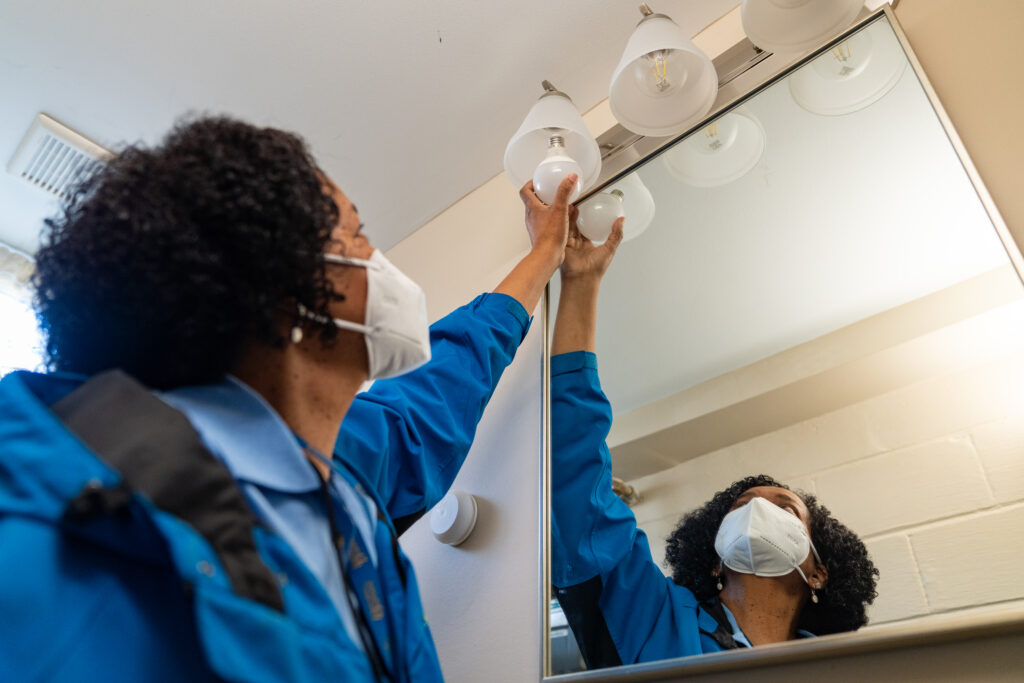In 2008, Maryland adopted the energy efficiency-boosting EmPOWER Maryland Act with the goals of lowering energy bills for consumers, making electricity service more reliable, and promoting public health. The investments made possible by the act have helped Maryland make huge strides, saving consumers $4 billion on their electric bills so far and reducing the state’s greenhouse gas emissions by 9.6 million metric tons, or the equivalent of taking 2 million cars off the road for a year. In the last eight years, however, the needs of the state and its residents have evolved – particularly given the need to encourage the broad scale electrification needed to meet Maryland’s climate goals – and the pending renewal of the program provides the General Assembly with the opportunity to make important reforms.
In this report Maryland PIRG and the Frontier Group analyze the design and progress of EmPOWER Maryland, finding that while it has been successful in meeting many of the established goals and has provided significant economic and climate benefits to Marylanders, the cost of implementation is higher than in other states and the progress is slow for Maryland’s least resourced residents who receive too few benefits. The report finds that:
- Current EmPOWER incentives undermine Maryland’s climate protection goals. Historically, energy efficiency programs under EmPOWER have focused on increasing efficiency regardless of the fuel used. Advances in home electrification coupled with the increasing urgency of the climate crisis require Maryland to take a different approach. Maryland will need to do its part to end the direct burning of fossil fuels in homes and commercial buildings in the next several decades to prevent the worst impacts of climate change. EmPOWER fails to adequately incentivize and prioritize efforts that would benefit both the climate and efficiency, such as replacing fossil fuel appliances and building systems with all-electric alternatives. Meanwhile, EmPOWER continues to offer incentives for fossil fuel-powered appliances including furnaces and water heaters, which will lead to more climate and air pollution.
- EmPOWER’s programs targeted at limited-income consumers deliver limited savings. Investments in energy efficiency in limited-income households and neighborhoods are critical for promoting healthier and more stable communities. Limited-income households shoulder a greater “energy burden” – the proportion of their gross income allocated to energy expenses – than other households. Yet EmPOWER allocates disproportionately fewer resources to limited-income households and delivers much smaller savings. While limited-income households represent at least 26.5% of households statewide, only 17.5% of residential spending under EmPOWER is allocated to them. And neither the Maryland General Assembly nor the Public Service Commission overseeing implementation of EmPOWER have set binding goals for the limited-income programs. The Maryland Department of Housing and Community Development achieved just 9% of its own energy savings target for limited-income multifamily residences in 2021 and only 70% of its target for single-family homes.
- Maryland utilities are leaving energy savings on the table. In 2021, Maryland’s utilities spent less than the allotted budget on almost every energy efficiency program – in some cases less than half of the allotted budget. Significant underspending on important programs indicates there is ample room for more benefits and savings from the programs.
- With better design, EmPOWER could deliver greater energy savings for everyone. Utilities are neither incentivized to meet efficiency goals nor penalized for failing to meet those goals. Creating such a “performance-based” mechanism could help drive longer-lasting saving for customers. EmPOWER financing was designed such that utilities pay for the program, ratepayers repay a portion of those expenses each year, and the unpaid expenses accumulate with interest – a financing design shared by just a handful of other states’ energy efficiency programs. The utilities have been earning a very high return on EmPOWER investments – about 16% to 20% of annual costs – and will continue to do so until 2024, when a recent ruling by the Public Service Commission will take effect.
Reauthorization of EmPOWER Maryland for the years 2024 to 2027 gives Maryland a timely opportunity to implement reforms that maximize and accelerate benefits to customers, address the urgent demand upon the state to dramatically decrease its climate footprint and tackle a growing energy affordability crisis for low-income Maryland households.
Read the report



